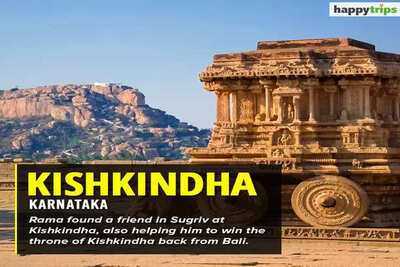
"Is the Ramayana just a tale of mythology, or does it carry echoes of historical truth?" This question has fascinated devotees and skeptics alike. Across India and beyond, sacred sites mentioned in ancient scriptures like the
Valmiki Ramayana,
Tulsidas Ramcharitmanas, and
Skanda Purana stand as tangible connections to this divine epic. These locations not only narrate Lord Rama’s journey but also reflect values like devotion, humility, and resilience, which continue to inspire millions.
Let us explore these 10 sacred sites where mythology meets history, offering proof of the Ramayana’s timeless legacy.
1. Ramanathaswamy Temple, Rameswaram (Tamil Nadu)
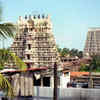
Ramanathaswamy Temple, dedicated to Lord Shiva, holds a profound connection to the Ramayana. It is believed that Lord Rama prayed here to atone for the sin of killing Ravana, who, despite being an adversary, was a Brahmin and a devout worshiper of Lord Shiva. The
Yuddha Kanda of the
Valmiki Ramayana describes how Lord Rama built a Shiva Lingam at Rameswaram and worshipped it to cleanse himself of this sin. This act of repentance highlights the importance of humility and dharma in Lord Rama’s life.
The temple itself is a masterpiece of Dravidian architecture, featuring the longest temple corridor in the world. Pilgrims flock here to take a holy dip in its 22 sacred wells, symbolizing the purification of the soul. The
Skanda Purana also mentions Rameswaram as a site capable of absolving sins, further reinforcing its spiritual significance.
2. Kashi Vishwanath Temple, Varanasi (Uttar Pradesh)
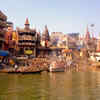
Varanasi, one of the world’s oldest cities, finds its mention in the Ramayana as a place visited by Lord Rama during his exile. The
Skanda Purana describes Varanasi as the “City of Light,” where Lord Shiva resides eternally. Though primarily a Shiva temple, Kashi Vishwanath holds significance for Ramayana devotees because of Lord Rama’s spiritual connection to the city.
Varanasi has long been a center for spirituality and learning, making it a fitting place for Lord Rama to seek divine blessings. The temple, with its timeless aura, continues to symbolize the union of Lord Rama’s devotion to Lord Shiva, a recurring theme in the Ramayana.
3. Chitrakoot Temple, Chitrakoot (Madhya Pradesh)
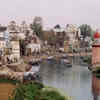
The serene forests of Chitrakoot served as the dwelling place for Lord Rama, Sita, and Lakshmana for a significant portion of their 14-year exile. The
Aranya Kanda of the
Valmiki Ramayana vividly describes this tranquil land, where the trio performed rituals and met sages like Atri and Anasuya. It was also in Chitrakoot that Bharat, Rama’s younger brother, pleaded with him to return to Ayodhya, an emotional moment detailed in the
Tulsidas Ramcharitmanas.
Today, Chitrakoot’s sacred sites, such as Ram Ghat and Janaki Kund, bear testimony to these events. Pilgrims visit these locations to relive the simplicity and devotion that defined Lord Rama’s exile.
4. Janaki Mandir, Janakpur (Nepal)
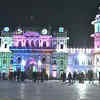
Janakpur, the birthplace of Goddess Sita, holds immense significance in the Ramayana. According to the
Valmiki Ramayana (Bala Kanda), King Janaka discovered Sita in a furrow while plowing the fields, marking her divine origin. The Janaki Mandir, built in her honor, stands as a symbol of her purity and devotion.
The temple, blending Mughal and Hindu architectural styles, attracts pilgrims from across India and Nepal. Devotees visit to celebrate Sita’s life and her marriage to Lord Rama, which is vividly described in both the
Valmiki Ramayana and the
Ramcharitmanas.
5. Bhadrachalam Temple, Bhadrachalam (Telangana)

Bhadrachalam is deeply intertwined with the Ramayana, as it is believed to be where Lord Rama stayed during his exile. The
Yuddha Kanda mentions this region as the site where Lord Rama met the sage Shabala, who blessed him for his journey ahead.
The temple was constructed in the 17th century by Bhakta Ramadasu, whose unwavering devotion to Lord Rama is legendary. The annual
Sri Rama Navami celebrations here attract thousands of devotees, keeping the epic’s stories alive in their hearts.
6. Dhanushkodi, Tamil Nadu
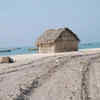
Dhanushkodi is considered the starting point of Rama Setu (Adam’s Bridge), the bridge built by Lord Rama’s vanara army to cross into Lanka. The
Yuddha Kanda details how this monumental task was completed under Rama’s guidance to rescue Sita.
Modern scientific studies, including satellite imagery by NASA, have revealed remnants of a land bridge between India and Sri Lanka, lending credence to the Ramayana’s account. For devotees, Dhanushkodi stands as a testament to divine will and human effort working in harmony.
7. Kishkinda Temple and Sita Ki Rasoi, Hampi (Karnataka)

Hampi, identified as the ancient monkey kingdom of Kishkinda, holds a special place in the Ramayana. The
Kishkinda Kanda describes this region as the land of Sugreeva, where Lord Rama formed an alliance with Hanuman and Sugreeva to rescue Sita.
Sita Ki Rasoi, believed to be the spot where Sita cooked for Rama and Lakshmana during their exile, symbolizes her simplicity and devotion. These sites remain a testament to the loyalty and courage of the characters in the Ramayana.
8. Maa Shabari Temple, Chitrakoot (Madhya Pradesh)

The story of Shabari, an elderly devotee who offered Rama berries after tasting them to ensure their sweetness, is one of the most poignant episodes in the
Aranya Kanda. This act of pure devotion teaches that the sincerity of one’s heart outweighs all material offerings.
The Maa Shabari Temple in Chitrakoot commemorates this event, reminding visitors of the selflessness and simplicity that defined Lord Rama’s journey.
9. Treta Ke Thakur Temple, Narmada (Madhya Pradesh)Treta Ke Thakur Temple is believed to mark one of Lord Rama’s many stops during his exile. It houses idols of Lord Rama, Sita, and Lakshmana, connecting the present with the divine events of the past.
The
Skanda Purana mentions the sanctity of such temples as markers of divine events, making them essential stops for pilgrims.
10. Rama Setu: Faith Meets Science

Rama Setu, also known as Adam’s Bridge, remains one of the most intriguing elements of the Ramayana. The
Yuddha Kanda describes its creation by Rama’s vanara army, while modern science corroborates its existence through geological evidence.
Satellite imagery reveals a chain of limestone shoals connecting India and Sri Lanka, believed to be remnants of this divine bridge. For devotees, Rama Setu is more than just a structure—it is a symbol of divine will and perseverance.
Conclusion: Where Faith and History ConvergeThe sacred sites of the Ramayana are not just places of worship but living testaments to an ancient epic that shaped India’s spiritual and cultural identity. These temples and landmarks, mentioned in sacred texts and supported by historical evidence, blur the line between mythology and reality.
Whether viewed through the lens of faith or history, these locations invite us to reflect on the timeless values of devotion, humility, and resilience that Lord Rama embodied. By exploring these sacred places, we not only connect with the divine but also find inspiration to navigate life’s challenges with grace and courage.
 "Is the Ramayana just a tale of mythology, or does it carry echoes of historical truth?" This question has fascinated devotees and skeptics alike. Across India and beyond, sacred sites mentioned in ancient scriptures like the
Valmiki Ramayana,
Tulsidas Ramcharitmanas, and
Skanda Purana stand as tangible connections to this divine epic. These locations not only narrate Lord Rama’s journey but also reflect values like devotion, humility, and resilience, which continue to inspire millions.
"Is the Ramayana just a tale of mythology, or does it carry echoes of historical truth?" This question has fascinated devotees and skeptics alike. Across India and beyond, sacred sites mentioned in ancient scriptures like the
Valmiki Ramayana,
Tulsidas Ramcharitmanas, and
Skanda Purana stand as tangible connections to this divine epic. These locations not only narrate Lord Rama’s journey but also reflect values like devotion, humility, and resilience, which continue to inspire millions.
 Ramanathaswamy Temple, dedicated to Lord Shiva, holds a profound connection to the Ramayana. It is believed that Lord Rama prayed here to atone for the sin of killing Ravana, who, despite being an adversary, was a Brahmin and a devout worshiper of Lord Shiva. The
Yuddha Kanda of the
Valmiki Ramayana describes how Lord Rama built a Shiva Lingam at Rameswaram and worshipped it to cleanse himself of this sin. This act of repentance highlights the importance of humility and dharma in Lord Rama’s life.
Ramanathaswamy Temple, dedicated to Lord Shiva, holds a profound connection to the Ramayana. It is believed that Lord Rama prayed here to atone for the sin of killing Ravana, who, despite being an adversary, was a Brahmin and a devout worshiper of Lord Shiva. The
Yuddha Kanda of the
Valmiki Ramayana describes how Lord Rama built a Shiva Lingam at Rameswaram and worshipped it to cleanse himself of this sin. This act of repentance highlights the importance of humility and dharma in Lord Rama’s life.
 Varanasi, one of the world’s oldest cities, finds its mention in the Ramayana as a place visited by Lord Rama during his exile. The
Skanda Purana describes Varanasi as the “City of Light,” where Lord Shiva resides eternally. Though primarily a Shiva temple, Kashi Vishwanath holds significance for Ramayana devotees because of Lord Rama’s spiritual connection to the city.
Varanasi, one of the world’s oldest cities, finds its mention in the Ramayana as a place visited by Lord Rama during his exile. The
Skanda Purana describes Varanasi as the “City of Light,” where Lord Shiva resides eternally. Though primarily a Shiva temple, Kashi Vishwanath holds significance for Ramayana devotees because of Lord Rama’s spiritual connection to the city.






 Rama Setu, also known as Adam’s Bridge, remains one of the most intriguing elements of the Ramayana. The
Yuddha Kanda describes its creation by Rama’s vanara army, while modern science corroborates its existence through geological evidence.
Rama Setu, also known as Adam’s Bridge, remains one of the most intriguing elements of the Ramayana. The
Yuddha Kanda describes its creation by Rama’s vanara army, while modern science corroborates its existence through geological evidence.